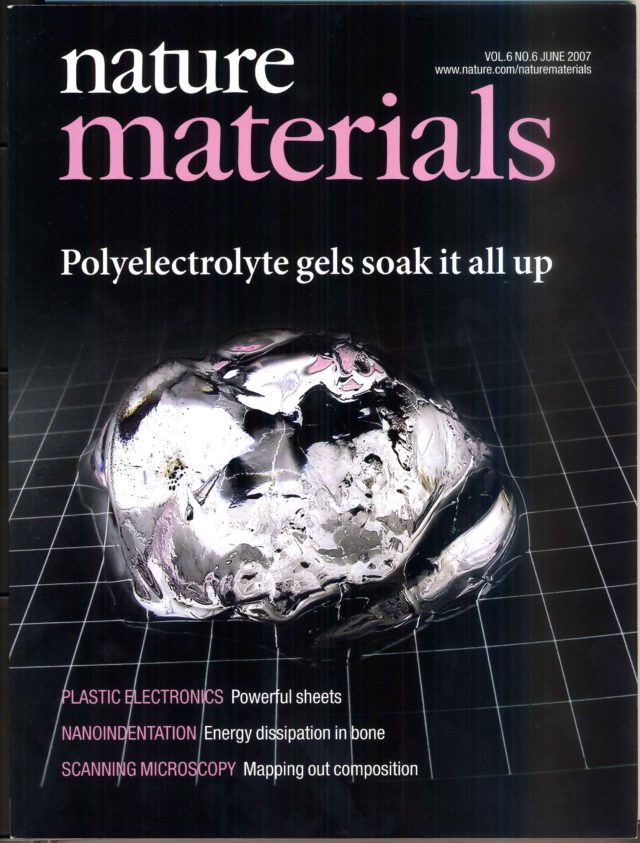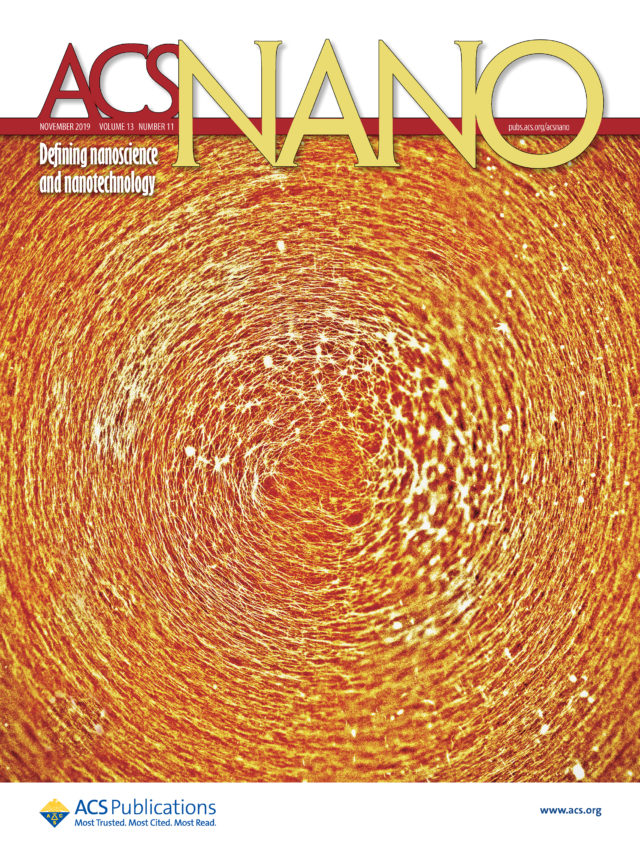Introduction of Research
Molecular Design of Oil Super-Absorbent Polymers
Materials that absorb water and swell in a large extent are well known as “super absorbent polymers”. However, they cannot swell in liquids other than water. Therefore, we are developing the super-absorbent materials that swell and absorb various liquids other than water such as petroleum and organic solvents. We hope to solve the environmental problems, involving oil fencing for oil spills into ocean or soil from tankers and pipe line, the recovery of harmful volatile organic compounds (VOCs) and discharged oil.
Functionalization of Polymer Gels by Cross-linking of Metal Organic Frameworks
We have been studying the crosslinking reaction of monomers by using metal-organic frameworks (MOF), which have a jungle gym structure with nm-sized lattice structures composed of metal ions and organic ligands as monomers. Our system is the only method to synthesize the 3D network of macromolecule (polymer gels) by arranging the monomers in three-dimensional arrangement and connecting them one by one. By changing the organic ligands and metal ions, the spacing and orientation of the monomers are changed and we could prepare the polymer gels that expand only in one direction. We have also succeeded in controlling the shape and size of the polymer gel by controlling the shape and size of MOF, making it possible to design and synthesize nano- to micro-sized polyhedral materials as new functional materials with the controlled shape and size.
Molecular Design of Stimuli-responsive Polymers
Stimuli-responsive polymers are materials that change their color and shape in response to stimuli. In particular, we have studying the molecular design of the thermo-responsive polymers. For LCST-type thermo-responsive polymers, the solubility suddenly decreases with increasing temperature, and and then the polymers dissolve again with decreasing temperature. Our design for LCST-type thermo-responsive polymers is mixing with an effector that partially cleaves the interaction between the polymer chains and increase the compatibility between the polymer chain and the solvent. We firstly proposed this three-component system of polymer-effector for LCST-type thermo-responsiveness. This technique enabled us to design thermo-responsive polymers in a variety of media and temperatures by controlling the intermolecular interactions. Additionally, we attempt for designing the muliti-thermo-responsive polymers and the stimuli-responsive polymers to various chemical reactions.
Active Matter based on Biomolecular Motors
In our cells, there are high-performance molecular machines that are difficult to achieve by modern mechanical engineering. The molecular machines are called biomolecular motors, which are fueled by ATP and can move micron-sized objects. We have been studying the control of self-propelled molecular machines using this soft power system, biomolecular motors. They have the ability to move around in a two-dimensional surface, which are completely different from the conventional non-moving materials. They are now recognized as new functional materials called as “active matter” and we attempt to create new emerged functions by using “active matter”.
Design & Function of Molecular Swarm Robots
Although biomolecular motors have functions such as transport on their own, their true value is demonstrated when they function as a group, like a swarm of fish, ants, or birds. For example, in our muscles, the biomolecular motors are assembled in a hierarchical and orderly manner to produce actual force. Recently, we have succeeded in building the world’s first molecular swarm robots that upgrade the molecular machines based on the biomolecular motor by combining them with nucleic acids (DNA), which have sensor and processor functions, to form a swarm in response to external stimuli. We hope to achieve a variety of functions that cannot be achieved by a single molecular machine alone.
Introduction of laboratory
”Mixture” is not a good term in chemistry, because chemistry has been seeking on the study of pure chemical compounds. In contrast to this conventional approach of chemistry, our group has been exploring on creating mixtures of several or more compounds to emerge novel functions, structures and reactions that could not be ever achieved by each of them alone. The ultimate mixture is the cell, which is the basis of living organisms. The cell is a complex mixture in the micron-sized vessel having a cell membrane, and its constituents are highly regulated to create a “living state.” Although not as rich in functions and information of living organisms that is the result of 4 billion years of evolution, we are going to create the complex mixtures and get to the essence of life by all our knowledge of organic chemistry, polymer chemistry, physical chemistry, non-equilibrium thermodynamics and other subjects.


